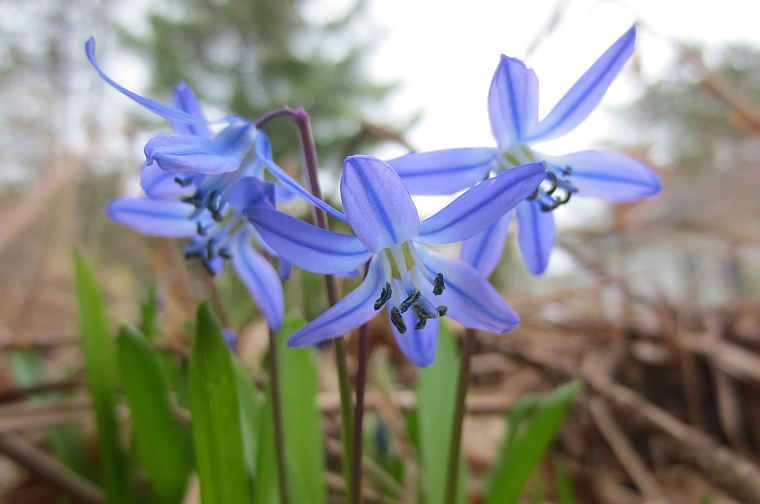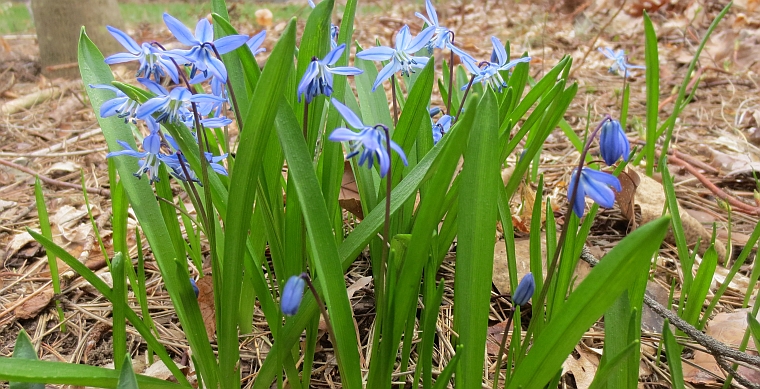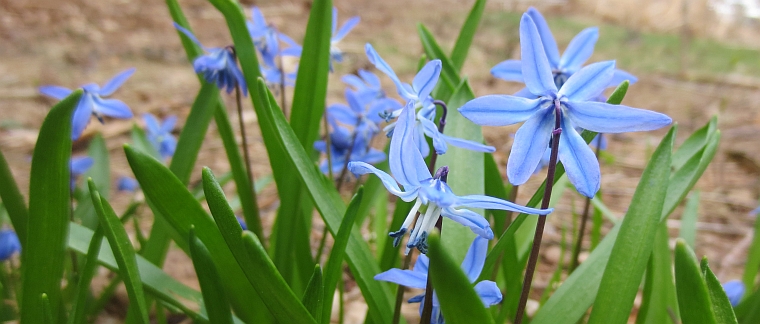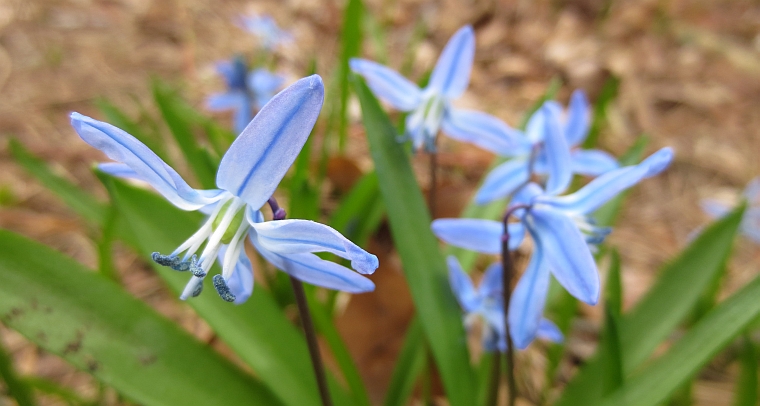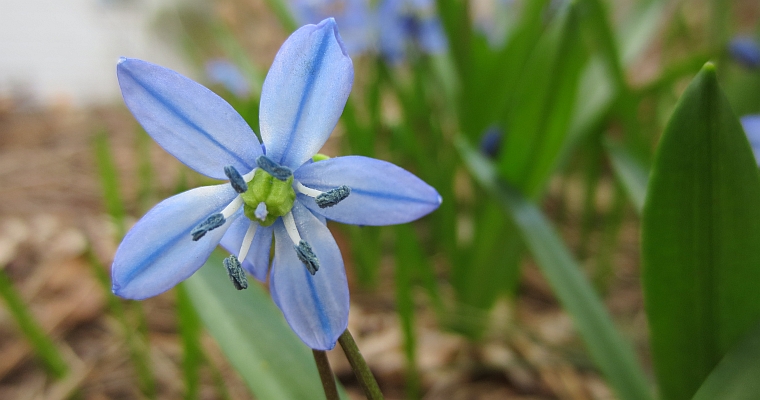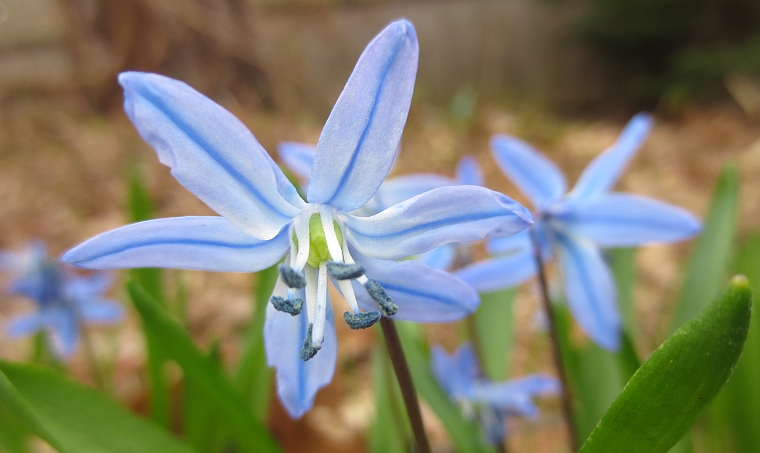Fulfilling a promise made a week or so ago, the blue blooms of a tiny Scilla patch have opened and brought a bit of the sky down low to the ground. For many years I dismissed the tiny early-bloomers like these, not wanting to waste my time and effort on something that would require a zillion bulbs to make the most minor impact. Much more bang for your back-breaking buck in planting a tree or shrub. Yet I did manage to sprinkle a few around in the backyard, and they’ve been coming back and actually seeding themselves in the surrounding area for a couple of years. As time goes by, and winters like this last one bleed endlessly into spring, I find great joy and relief in seeing the first signs of garden life peeking through the brown layer of oak leaves and dead grass stalks.
It has me rethinking my aversion to the little beauties, and I may end up popping a few more in the ground this fall closer to the house. They’re so small and inconspicuous except for when they bloom that they shouldn’t be a bother.
Thanks to the camera, little blossoms like this can take on gargantuan proportions, becoming something quite different as you see in this progression of shots. It makes you realize how something so tiny, blooming in a sea of brown, still has its own power.
Locating a flower in bloom has always been a talent of mine. I can spot the lone lupine along the highway while speeding along at 74 miles per hour. I can pick out the tiny clusters of white blooms riding the crests of the sweet woodruff a whole backyard away. I can hone in on the scarlet banner of a fluttering cardinal flower in a meadow otherwise over-run by Queen Ann’s lace. In the case of the cardinal flower, it’s simply a matter of noticing what’s different. Certain blooms stands out like that. But in others, it takes a trained eye to pick up on the subtle call of the flowers – such as the dangling fragrant bells of the Solomon’s Seal, hidden beneath the variegated foliage, or the inconspicuous chocolate-hued bloom of the European ginger.
So much of life is about looking deeper, peering beneath the surface – and the garden is no different.
Back to Blog
